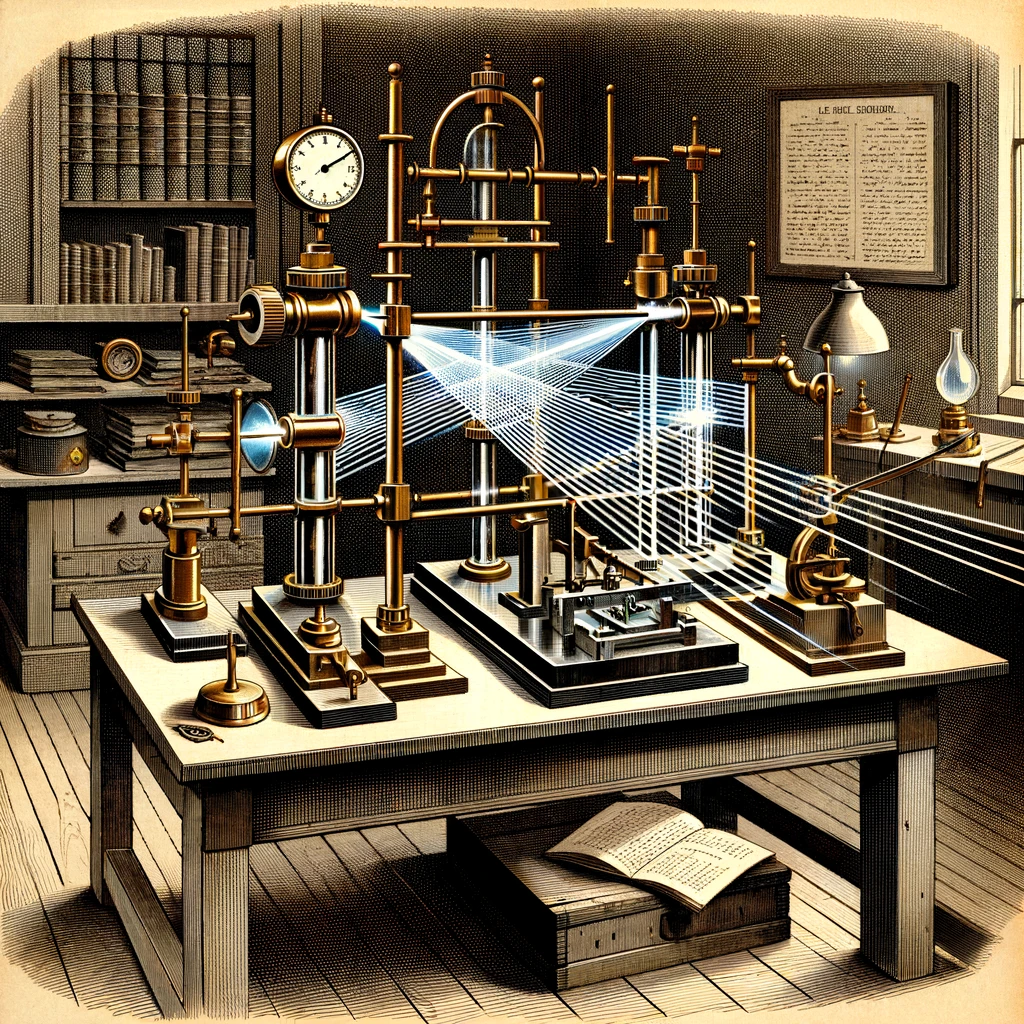The Michelson-Morley experiment, conducted in 1887 by Albert A. Michelson and Edward W. Morley, is one of the most famous and significant experiments in the history of physics. It was designed to detect the presence of a substance known as “aether,” which was once hypothesized to be the medium through which light waves travel, much like sound waves travel through air.
In the late 19th century, physicists believed that aether permeated all space and was stationary relative to the universe. The Earth, moving through this aether, should create a measurable “aether wind” affecting the speed of light. The Michelson-Morley experiment aimed to detect this effect.
The experiment used a device called an interferometer, specifically the Michelson interferometer, which splits a beam of light into two perpendicular paths. A half-silvered mirror splits the light beam into two, and the split beams travel along perpendicular arms of equal length, reflect off mirrors, and then recombine. When the beams recombine, they create an interference pattern that depends on the difference in the path lengths of the two beams.
In the procedure, the light beam from a source is split into two beams traveling at right angles to each other. After traveling along their respective paths, the beams are recombined, and the interference pattern of the recombined beams is observed. If the Earth were moving through aether, one of the beams would travel slightly faster than the other, depending on the direction of the aether wind. This would cause a shift in the interference pattern.
The experiment was repeated multiple times at different times of the day and year to account for changes in the Earth’s motion relative to the aether. However, the experiment consistently showed no significant difference in the speed of light along the two paths.
The null result of the Michelson-Morley experiment indicated that there was no detectable aether wind, leading to the conclusion that the aether did not exist. This result was pivotal in the development of modern physics, particularly influencing Albert Einstein’s special theory of relativity, proposed in 1905. Einstein’s theory posited that the speed of light is constant in all inertial frames of reference and does not require a medium to propagate. Additionally, the experiment supported the view that light does not require a medium, fitting into the broader wave-particle duality of light and leading to advancements in quantum mechanics.

The Michelson-Morley experiment remains a cornerstone in the history of physics, demonstrating the importance of experimental evidence in shaping scientific theory.
